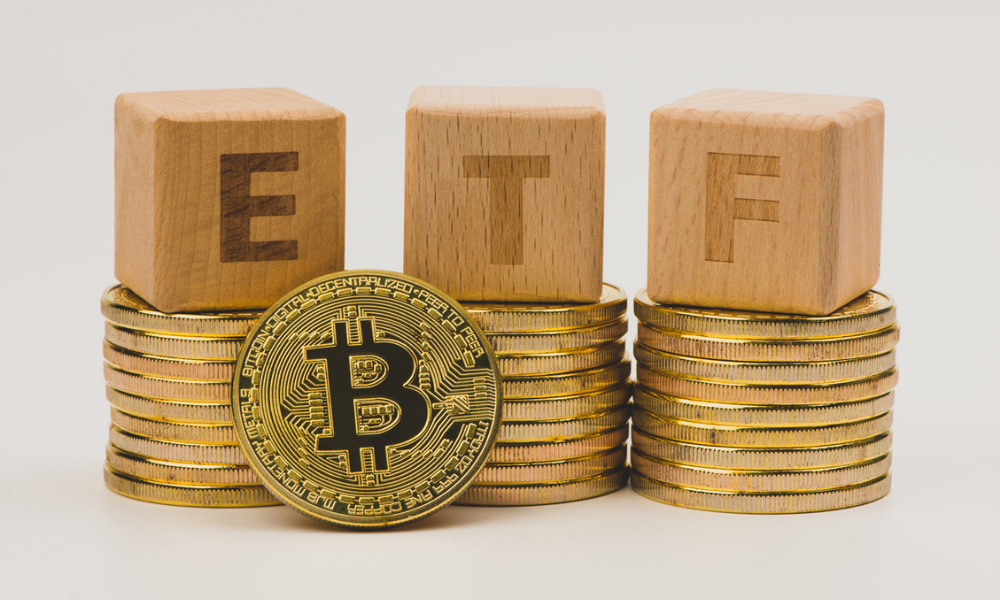Quick Links
As the crypto terrain constantly reshapes, the concept of a Bitcoin ETF has long been the subject of fervent discussion, representing a gateway for mainstream investors to gain regulated exposure to the digital assets. The year 2024 proved to be a watershed moment in this saga, as Bitcoin ETFs finally received regulatory approval. However, the path leading to this milestone was fraught with challenges, regulatory hurdles, and moments of anticipation. Let’s embark on a journey through the rollercoaster ride that defined the timeline of Bitcoin ETFs.
How do Bitcoin Exchange-Traded Funds (ETFs) operate?
A Bitcoin ETF allows investors to purchase shares representing ownership in a portfolio of assets the ETF holds. Bitcoin is the primary asset in this instance. The performance of an investor’s investment is directly linked to fluctuations in the price of Bitcoin.
Understanding Bitcoin Exchange-Traded Funds (ETFs)
For years, the potential arrival of a Bitcoin Exchange-Traded Fund (ETF) has captivated the cryptocurrency world. Let’s delve deeper into what this concept represents and the significance of its recent, much anticipated approval.
Imagine effortlessly adding Bitcoin to your investment portfolio alongside stocks and bonds. That’s the dream a Bitcoin ETF promised – a simplified way to gain exposure to the digital asset’s price movements without the complexities of directly buying and storing it.
Exploring the Varieties
- Bitcoin Futures ETFs: These, like the ProShares Bitcoin Strategy ETF (BITO), launched in October 2021, do not hold actual Bitcoin but contracts tied to its future price. This offers a regulated way to gain exposure but comes with tracking errors (meaning performance may not perfectly mirror Bitcoin’s).
- Spot Bitcoin ETFs: Recently approved by the SEC, everyone was waiting for these. They aim to hold Bitcoin directly, similar to gold ETFs holding precious metals. This closely reflects Bitcoin’s price movements, potentially attracting more mainstream investors.
Significance of its Arrival
- Increased Accessibility: Spot Bitcoin ETFs could broaden investor participation in the cryptocurrency market, bringing it to traditional investment platforms and potentially boosting Bitcoin’s adoption and liquidity.
- Regulatory Acceptance: Their approval marks a milestone in the regulatory landscape, potentially paving the way for more crypto-related products and easing concerns about the industry’s legitimacy.
- Institutional Investment: Easier access could attract institutional investors who were hesitant due to regulatory uncertainties and complexities of direct Bitcoin ownership.
Bitcoin ETFs: The Chronological Journey
- 2013: The Winklevoss brothers file the first-ever Bitcoin ETF application with the SEC, but it’s ultimately rejected due to concerns about market manipulation and price volatility.
- 2014-2020: A steady stream of applications from various companies like Direxion, VanEck, and Bitwise follow, each facing similar resistance from the SEC citing the same concerns.
- October 2021: A turning point arrives with the approval of the first Bitcoin futures ETF, allowing indirect exposure to the asset. ProShares Bitcoin Strategy ETF (BITO) launches, generating massive interest and exceeding $1 billion in AUM within a day.
- 2022: Despite the futures ETF’s success, applications for spot Bitcoin ETFs (directly tracking the price) continue to face SEC scrutiny. Many are rejected, including proposals from Grayscale, Fidelity, and Ark Invest.
- June 2023: On June 15th, BlackRock’s iShares arm filed an application with the SEC for the iShares Bitcoin Trust, a spot Bitcoin ETF. This marked a major development as BlackRock, the world’s largest asset manager, entering the Bitcoin ETF space could have significant implications for the market.
- August 2023: A federal appeals court rules in favor of Grayscale, challenging the SEC’s rejection of their spot ETF application. This decision puts pressure on the regulatory body to re-evaluate.
- October 2023: The SEC opts not to appeal the court ruling, paving the way for a potential green light for spot Bitcoin ETFs in the near future.
- December 2023: On 19th of December Representatives from BlackRock (BLK), Nasdaq, and the Securities and Exchange Commission (SEC) met for the second time in a month to discuss rule changes that are necessary to list the bitcoin (BTC) exchange-traded fund (ETF), according to a published memo.
- January 2024: After months of anticipation, the SEC finally approves several spot Bitcoin ETF proposals, marking a historic moment for the cryptocurrency industry. BlackRock, Fidelity, VanEck, and others receive the green light, launching their ETFs within days.
Numbers Behind the Buzz
The highly anticipated launch of spot Bitcoin ETFs has finally arrived, but what do the numbers reveal about this groundbreaking financial instrument? Let’s delve into some key statistics and figures across different categories and timeframes:
Bitcoin ETFs: Market Landscape
- Total AUM: At the time of writing, the cumulative volume traded for spot Bitcoin ETFs is already nearing $45 billion. This figure is expected to surge as more ETFs launch and gain traction.
- Number of Approved ETFs: Several proposals received green lights in January 2024, with BlackRock, Fidelity, and VanEck leading the pack. Expect more launches in the coming weeks, further diversifying the landscape.
- Competition: While no direct competitors exist in the US yet, Canada boasts several established spot Bitcoin ETFs, accumulating over $1 billion in AUM collectively
Performance and Fees
- Tracking Error: Early analysis suggests the first spot ETFs are experiencing some tracking error compared to the actual Bitcoin price. This likely stems from factors like daily rebalancing and underlying fund structures.
- Management Fees: Fees vary slightly across different products, but generally fall within the 0.4%-1.0% range, reflecting the added operational complexity compared to traditional ETFs.
Investor Impact
- Trading Volume: The first days of trading saw significant volume surges, indicating strong investor interest. This could fuel further price discovery and liquidity for Bitcoin.
- Institutional Adoption: The ease of access offered by ETFs could attract more institutional investors, potentially impacting market dynamics and volatility.
- Retail Investor Participation: Easier and safer entry points might encourage more retail investors to explore Bitcoin, broadening its market base.
Beyond the Launch
Challenges and Uncertainties
- Regulatory Headwinds: New regulations or unforeseen policy changes could still pose challenges for the industry. Staying informed about regulatory updates is crucial for navigating this dynamic environment.
- Competition Heats Up: Established financial institutions and alternative investment vehicles could compete for investor interest. Diversification and a clear understanding of product offerings will be key in this competitive landscape.
- Security and Transparency Paramount: Maintaining robust security measures and ensuring transparent fund operations remain crucial for building trust and attracting mainstream investors. Reputational risks should be mitigated through diligent security practices and clear communication.
What the Future Holds
- Market Expansion: With the regulatory approval of Bitcoin ETFs, we can expect to see a broader range of investors entering the cryptocurrency market, driving further market expansion.
- Institutional Adoption: The ease of access provided by Bitcoin ETFs could attract more institutional investors, further legitimizing Bitcoin as an asset class and driving increased investment.
- Global Impact: As Bitcoin ETFs gain traction, we may see similar products being introduced in other countries, further expanding the global reach of the cryptocurrency market.
The future of Bitcoin ETFs is brimming with potential, but uncertainties remain. Investors should adopt a proactive approach, staying informed about developments in regulation, innovation, and market dynamics. Remember, while ETFs offer convenient exposure, thorough research and a comprehensive understanding of the underlying asset are crucial before making any investment decisions.
Conclusion
The journey of Bitcoin ETFs from a distant dream to a tangible reality has been marked by regulatory hurdles and moments of anticipation. The year 2024 saw the SEC’s approval of spot Bitcoin ETFs, marking a pivotal moment in the cryptocurrency market’s evolution. These ETFs offer regulated access to Bitcoin, attracting a broader investor base and potentially increasing liquidity. Despite challenges like concerns about market manipulation and custody, perseverance led to this milestone. With billions already invested and more launches expected, Bitcoin ETFs signify the maturation and mainstream acceptance of Bitcoin as a legitimate asset class, promising further market evolution in the future.
Recent Post
- What Makes Sui Unique? The Rising Star in the Battle for Blockchain Supremacy
- Popular Crypto Games on Telegram: Top Picks for 2024
- Which Blockchains Are Profitable? A Look at the Money-Makers
- How Chain Abstraction and Intents are Reshaping Blockchain Interaction
- What Is Disaster-Proofing and Why Is It Necessary for Your Crypto Portfolio?












